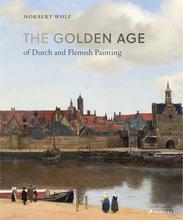More about The Laughing Cavalier
- All
- Info
- Shop

Contributor
The Laughing Cavalier by Frans Hals may not actually be laughing, but his complete over-the-topness is laughable.
This portrait was created by the great Frans Hals in 1624, when this unknown sitter was just twenty-six years old. Critics have guessed that he was some sort of textile merchant or an officer, but nothing definitive as of yet. It is hypothesized that this painting was the inspiration for the logo of McEwan’s, a brand of beer from Scotland, which would be highly appropriate because this guy looks about as confident as three beers gets you. But unfortunately this is unproven.
The cavalier’s confidence is probably also affected by the fact that he is dressed to impress. He is wearing one of those funny collar things, an absurdly large hat, and a doublet (aka a man’s jacket) that is thoroughly embroidered. This embroidery actually gives us a clue as to what this portrait’s purpose was. There are arrows, cornucopiae on fire, and lovers’ knots, all of which are emblematic of the pleasure and pain of true love. So this work could very well be a engagement portrait, but no one has ever found this guy’s lady companion. Last but not least, we must address his facial hair. He has an upturned mustache that rivals only Salvador Dali’s and his soul patch is beyond comparison. Personally I think anyone that looks good with a soul patch would look better without one, but this is something special.
This painting also does that crazy thing in scary movies where the eyes of paintings follow you around the room. It turns out that they only do that when the eyes are painted looking directly out from the painting. Luckily for us, there is science to debunk all of our worst art history-related nightmares.
In 1865, this painting was the cause of a fierce auction battle between the 4th Marquess of Hertford and Baron James de Rothschild. The painting eventually was sold to Lord Hertford for fifty-one francs, which apparently was an absurd amount at the time. This made the painting, and Hals very famous. It became Hals’ most popular work and even inspired a novel by the same name by Baroness Orczy in 1913. Not sure how you could write an entire novel about this guy but more power to her.
Sources
- McCoy, Matthew. "Butcher & Gundersen Redesigns Mcewan’S." BXP Magazine. N.p., 2018. Web. 1 Nov. 2018. http://www.bxpmagazine.com/article/butcher-gundersen-redesigns-mcewans
- Sample, Ian. "How The Laughing Cavalier Keeps An Eye On Everybody." the Guardian. N.p., 2004. Web. 1 Nov. 2018. https://www.theguardian.com/science/2004/sep/22/arts.science
- "Wallace Collection Online - The Laughing Cavalier." Wallacelive.wallacecollection.org. N.p., 2018. Web. 1 Nov. 2018. https://wallacelive.wallacecollection.org/eMP/eMuseumPlus?service=Exter…
Featured Content
Here is what Wikipedia says about Laughing Cavalier
The Laughing Cavalier (1624) is a portrait by the Dutch Golden Age painter Frans Hals in the Wallace Collection in London. It was described by art historian Seymour Slive as "one of the most brilliant of all Baroque portraits". The title is an invention of the Victorian public and press, dating from its exhibition in the opening display at the Bethnal Green Museum in 1872–1875, just after its arrival in England, after which it was regularly reproduced as a print, and became one of the best known old master paintings in Britain. The unknown subject is in fact not laughing, but can be said to have an enigmatic smile, much amplified by his upturned moustache.
Check out the full Wikipedia article about Laughing Cavalier














